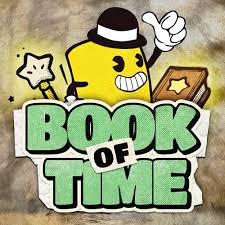Managing appointments and reservations efficiently is crucial for service providers, event organizers, and any business that relies on scheduled interactions. The Book of Time Slot system emerges as a powerful tool to streamline this process, ensuring optimal resource utilization, reducing no-shows, and enhancing customer satisfaction. This comprehensive guide will delve into everything you need to know about time slot management, from foundational concepts to advanced strategies, providing invaluable insights to elevate your scheduling practices.
Understanding the Concept of a Book of Time Slot
Before diving into practical applications, it’s essential to grasp what a Book of Time Slot truly represents in modern scheduling solutions s666 đăng nhập.
A Book of Time Slot refers to an organized digital or physical ledger that allocates specific periods for individual appointments, meetings, or reservations. It structures the day into predefined segments, allowing both providers and customers to select preferred times within those segments. This concept simplifies complex scheduling systems by breaking down busy calendars into manageable units, which can be customized based on operational needs.
The significance of a well-implemented Book of Time Slot lies in its ability to balance demand with capacity, prevent double bookings, and facilitate real-time updates. In essence, it transforms chaotic scheduling into a systematic, transparent, and user-friendly process. Whether through traditional paper logs or sophisticated online platforms, understanding the core principles of this concept lays the foundation for effective management.
Historical Evolution of Time Slot Booking
Initially, appointment scheduling was manual—using paper diaries or appointment books where staff manually recorded client visits. With technological advancements, these manuals transitioned into digital calendars like Outlook or Google Calendar, offering basic time-blocking features.
However, such systems often lacked automation, multi-user access, or customizations needed by larger organizations. The emergence of dedicated Book of Time Slot software changed the landscape dramatically. These tools introduced features like online booking portals, automated reminders, and capacity management, revolutionizing how businesses handle scheduling.
Understanding this evolution highlights why modern time slot management isn’t just about marking times but involves integrating smart, flexible systems that adapt dynamically to changing demands. It underscores the importance of choosing the right platform aligned with your organizational goals link vào trang s666.
Key Components of an Effective Time Slot Management System
An efficient Book of Time Slot system comprises several critical elements:
- Availability Settings: Defines when slots are open for booking, including working hours, buffer periods, and blackout dates.
- Capacity Limits: Sets maximum number of clients per slot if multiple appointments can occur simultaneously.
- Booking Interface: User-friendly portals that enable clients to view available slots and make reservations seamlessly.
- Notification & Reminders: Automated alerts to reduce no-shows and keep clients informed.
- Backend Management: Administrative controls for staff to modify availability, manage cancellations, and analyze booking data.
Integrating these components ensures a smooth experience for both users and administrators, minimizing errors and optimizing resource allocation.


